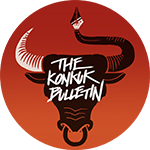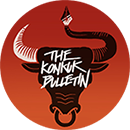Starbucks administers their supply system using Azure Blockchain

In May, Starbucks introduced a new program, “Bean to Cup”, by using Microsoft’s “Azure Blockchain”. Through Azure Blockchain, Starbucks expects to manage their supply system.
Blockchain is a technology that Satoshi Nakamoto (pseudonym) invented to solve the double transaction and transaction fraud problems of cryptocurrency1). Users save the transaction records of each block, the data storage, and then other users have them. Therefore, users can check the records without a central server. Blockchain is currently used not only for cryptocurrency, but also in other fields such as financial and medical.
Microsoft’s Azure Blockchain is the system that applies Azure, Microsoft’s cloud computing platform2), to many areas such as management finance and supply. In supply management, suppliers give the supplies a sensor that can track their supply chain. Through blockchain, each of the blocks contains information of the supplies’ quantity and supply condition and they are connected to each other by a chain.
Based on this technology, Starbucks allows the suppliers to put data into the block. Moreover, Starbucks enables users to track the supply process by combining the User
Interface (UI3)) and mobile application. Through this, Starbucks can check the material, and the environment in real time, and if there are any problems, it can notice that in real time as well. Consumers are able to get the information about products from smartphones, calculate the value of brands, and then make the right consumption choices. Furthermore, they can avoid the case of inventory shortage. Suppliers will gain the trust of their supplies and maintain the supply chain with the retailer. The retailer (Starbucks) will get good supplies and if there are no problems with the supply process, it can shorten the resolution time.
Not only Starbucks, but also many global food companies, including Dole, Driscoll’s, Golden State Foods, Kroger, and Walmart, use blockchain for supply management. According to the World Economy Forum (WEF), the technology utilizing blockchain will increase. Moreover, at present, International Organization for Standardization (ISO) push ahead with blockchain standardization. Therefore, it is time for people to pay attention to blockchain.
1) A digital asset designed to work as a medium of exchange that uses strong cryptography to secure financial transactions, control the creation of additional units, and verify the transfer of assets.
2) The on-demand availability of computer system resources, especially data storage and computing power, without direct active management by the user.
3) The space where interactions between humans and machines occur.

